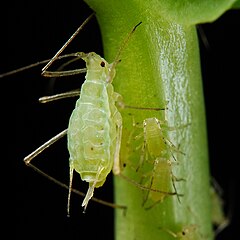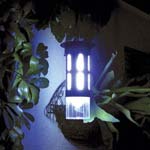I began working with Poison Frogs and Mantellas in zoos just as the secrets to longevity and breeding were being discovered. Today, captive-bred animals are almost mainstream. This is wonderful, but there is a downside – they are sometimes viewed as “simple to keep”. But while these tiny gems can be surprisingly hardy, they will not thrive long-term if their unique nutritional requirements are not met. Friends of mine who have broken new ground with Poison Frogs – in one case years before most zoos did – have always expended a great deal of effort on providing a varied diet. The following information is drawn from their and my own experiences over several decades, and may also be applied to the care of many other small and newly-transformed amphibians.
General Considerations
Although we do not know the exact nutritional needs of any species, certain principles have become evident. Chief among these is that a highly-varied diet is essential. Crickets alone, even if powdered with supplements, are not an adequate diet. There are exceptions, but nearly every study of free-living amphibians reveals that a surprising range of prey species are consumed.
Comparatively large species, such as the Golden Poison Frog (Phyllobates terribilis), are able to consume a wider range of food items than their tiny relatives, and hence may be a better choice for most hobbyists. The largest Mantellas reach a mere 1 ½ inches in length, so providing for them can be quite a challenge.
Poison and Mantella Frogs have large appetites and should be fed every day or two. One Brown Mantella was observed to eat 53 ants in 30 minutes!
The Ideal Diet
Always try to offer your frogs as many of the following food items as possible.
Moths, Gnats and other Small Flying Insects
These can be easily collected near outdoor lights. Zoo Med’s Bug Napper, which traps live insects drawn to light, is indispensable to serious frog-keepers. I use it at home, and relied upon similar models during my zoo career (please see photo).
Leaf Litter Invertebrates
Ants, slugs, millipedes, sow bugs, mites, springtails, bristletails, termites and similar creatures form the bulk of the natural diets of most small ground-dwelling frogs. And whether you live in the countryside or the heart of NYC, a free supply is as close as the nearest batch of decaying leaves. Please see this article for further information.
Simple pitfall traps can also be used to harvest a variety of small invertebrates.
Flightless Fruit Flies
Cultures are available commercially, and once you develop a system you can assure a year-round supply.
Aphids
Aphids are tiny insects that gather in huge groups on the stems of native and garden plants. In many habitats, hundreds can be collected in a few minutes by merely snipping off an infested stem. As a child, I fed aphids to a wide variety of creatures, including American Toad and Gray Treefrog metamorphs, Red-Backed Salamanders and hatchling Chinese Mantids, and continued to use them throughout my zoo career. They are soft-bodied (an important consideration for some frogs), and seem to be a nutritious food item.
These primitive insects are an excellent food source and can be bred year-round (cultures available commercially) or collected below leaf litter just about anywhere. They are easy to nutrient-load, feeding ravenously upon fish flakes and soaked Reptomin.
Termites
Termites are valuable foods for Poison Frogs, and are likely consumed by most in the wild. Termites can easily be collected from colonies established in dead logs. A termite trap, baited with damp cardboard, is simple to construct and may yield thousands of insects each season. Please see the article linked below.
Flour Beetle Larvae
I was first introduced to flour beetles some 20 years ago by Bob Holland, a friend who was setting Poison Frog longevity records before most zoos kept any at all. Back then, we collected our stock from old boxes of dog biscuits. Today, two species easy-to-breed insects are available commercially. Please see the article linked below for further information.
Ants
Experimentation is required where ants are concerned, as some species are rejected and others are adept at repelling predators. But the effort is worthwhile, as ants feature heavily in the diets of nearly all small frogs. Most are easy to trap. During my years at the Bronx Zoo, nuptial flights of breeding males and females would erupt regularly from a colony beneath the Reptile House. I’d gather as many as possible, and delighted in seeing the enthusiastic responses of creatures ranging from Spring Peepers to Pangolins.
“Meadow Plankton”
This is a term used by entomologists to describe the myriads of tiny invertebrates that can be gathered by sweeping through tall grass with a net. Beating bushes so that insects fall onto a sheet spread below is equally rewarding (and great fun…I’ve collected some fascinating creatures in these ways!). Tiny grasshoppers, tree crickets, caterpillars, leafhoppers and innumerable others can contribute greatly to the health of your animals.
It takes some time to properly master this technique, and there are some precautions that must be taken (recognizing dangerous species, pesticide concerns) Please see this article and post your questions below.
Praying Mantid Nymphs
Hatchling mantids are an excellent food for tiny amphibians of all kinds. Egg cases may be collected or purchased from garden supply dealers. Please see this article to learn more about this under-utilized food.
Pinhead and 10 day-old Crickets
Crickets should themselves properly fed. Please see this article for information on their husbandry and use.
Supplements
All commercial insects (crickets, fruit flies) should be powdered with Tetra ReptoCal or Zoo Med ReptiCalcium. A vitamin/mineral supplement such as ReptiVite with D3 should be used 2-3 times weekly. I do not supplement wild-caught insects.
Colleagues in various zoos are experimenting with other supplements; I’ll stay alert for developments. In the meantime, please post your own experiences below.
 That Reptile Blog – Reptile, Amphibian and Exotic Pet Care and Information
That Reptile Blog – Reptile, Amphibian and Exotic Pet Care and Information





